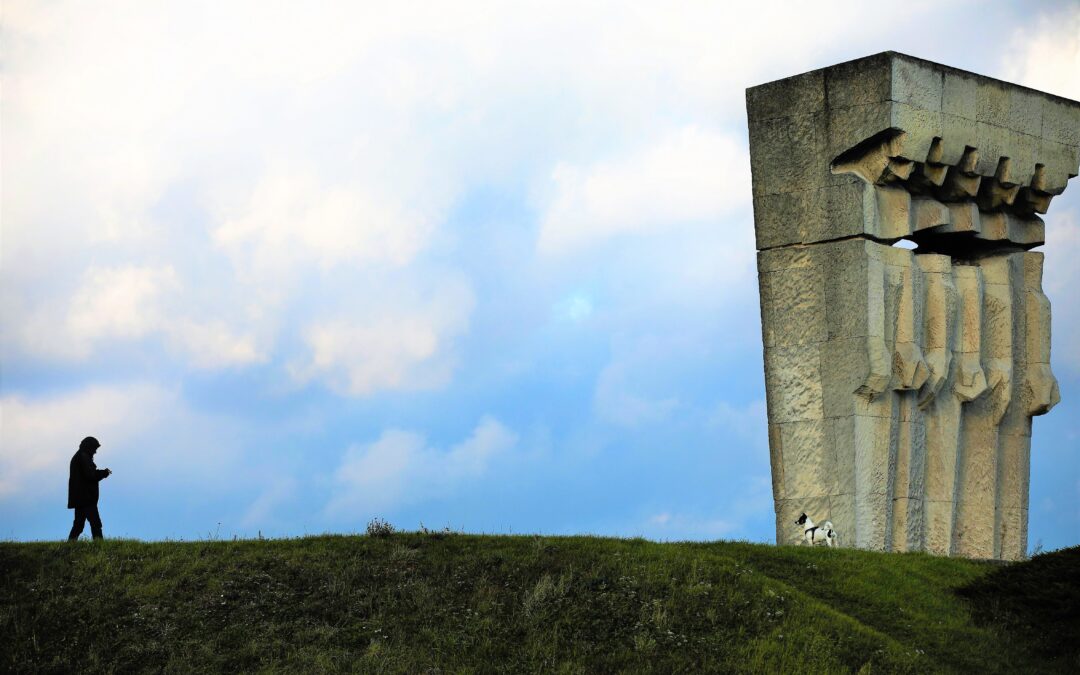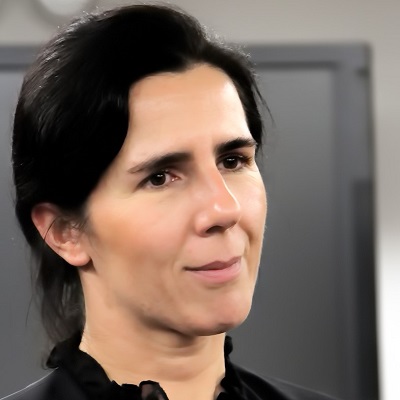By Edyta Gawron (tekst dostępny również w wersji polskiej)
Opinions are divided over what to do with former Nazi German concentration camp KL Plaszow in Kraków, which featured in the film Schindler’s List. Despite being the resting place of thousands of prisoners, the area of the camp has become a space used by local residents for recreation. This has made commemoration a challenge, with plans to create a museum at the site arousing opposition.
In autumn, a huge green space in Kraków’s Podgórze district changes colours as falling leaves and drying grass expose ruins. The obelisks and monuments erected on the hill become more visible. The colder it gets, the fewer people make it here, while birdsong in the nearby reservation subsides. What doesn’t change is the hum of cars on the adjacent arterial roads and the string of signs advertising shopping malls.
It was here, in the Second World War, that the Nazi forced labour camp, and then concentration camp, Plaszow functioned. The camp became infamous worldwide in the early 1990s when it featured in Steven Spielberg’s film Schindler’s List, which presented the history of Kraków’s Jews in the Holocaust, and especially their work at Oskar Schindler’s nearby enamel factory, from which many were saved.
Spielberg recreated part of the Plaszow camp structure, portraying the prisoners and their living conditions and the dramatic scenes played out here. The film, based on authentic stories, also introduced viewers to the camp commandant, Amon Göth, his residence (the original building is now in a residential area), and characteristic elements of the topography.
For many Kraków residents, Schindler’s List provided an awareness of the role of Plaszow camp in the city’s history and the Holocaust. Some scenes were shot in the nearby Liban quarry, and even today, the scenery left behind causes confusion regarding the distinctions between genuine history and cinematic fiction.
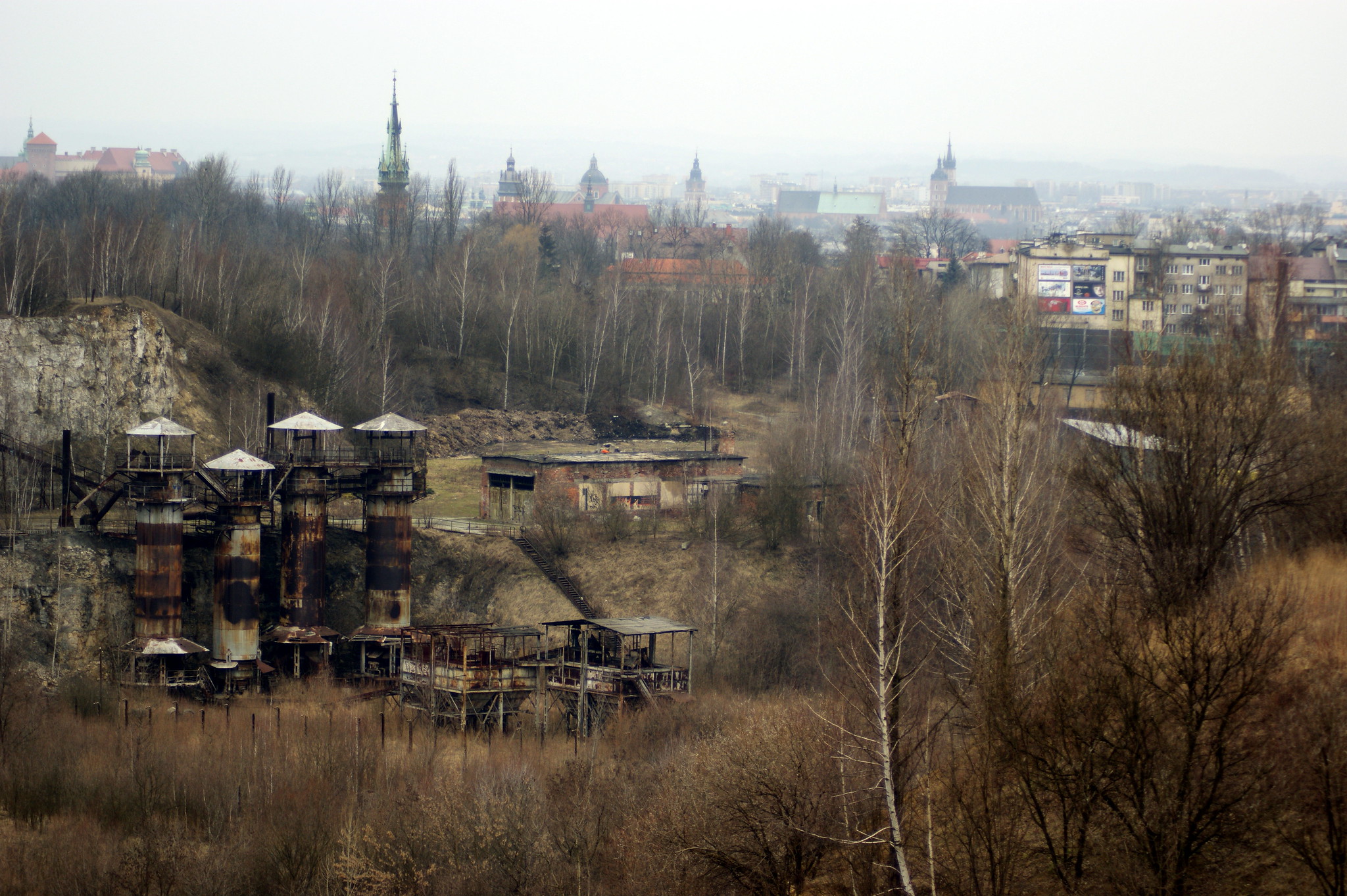
The Liban quarry, looking towards the centre of Kraków (Allie_Caulfield/Flickr, under CC BY 2.0)
According to scholars, the remains of up to 10,000 people could lie here. Yet over the last few decades, the residents of neighbouring estates have treated this area as a park, the only such large green space in the area, popular as a meeting and replace or for recreation.
Following years of debate, in October Kraków city council adopted a resolution to establish an institution at the sight to commemorate its history. Early next year, work is due to begin on what is described officially as a “Museum – Place of Remembrance”, which will be built on almost 40 hectares of land.
Multiple levels of history
The Plaszow camp was created on the orders of the German occupying powers in autumn 1942 on an area that included private homes, several institutions and two Jewish cemeteries.
It was set up as a forced labour camp particularly for the local Jewish population, but Polish Christian prisoners, Roma and Jews transported from Romania and Hungary were soon also brought there to work.
Numerous executions took place in the camp, both of prisoners and of people arrested in Kraków. The victims’ bodies ended up in mass graves. Later on in the camp’s operation, especially after it was transformed into a concentration camp in 1944, the Germans removed all evidence of their crimes, including the remnants of mass execution sites, and the remains of their victims were burnt and scattered across the whole space. The post-camp area thus became a war cemetery.
The Red Army’s arrival in Kraków in 1945 ended the camp’s formal operation under the auspices of the Nazi authorities. Much earlier, starting in October 1944, the camp staff, some of its prisoners and strategic or valuable elements of the infrastructure were evacuated to Germany.
The complex question of remembrance
After the war, a commission investigating the crimes perpetrated in occupied Poland, together with the local branch of the Jewish historical commission, carried out documentation work and collected evidence to be used during the trials of the Nazi war criminals.
This was when the first discussions on commemoration of the site began. Yet their practical effects were visible only decades later, and the intervening period saw the systematic erasure of traces of the history of the area, including the buildings of the former camp.
In 1964, a monument was erected on a hill overlooking the site of the former camp – with the huge legend “In homage to the martyrs murdered by the perpetrators of Nazi genocide in 1943–1945” etched in stone. The general nature of the memorial, however, left a sense of inadequacy in the context of commemorating the Jewish victims of the site.
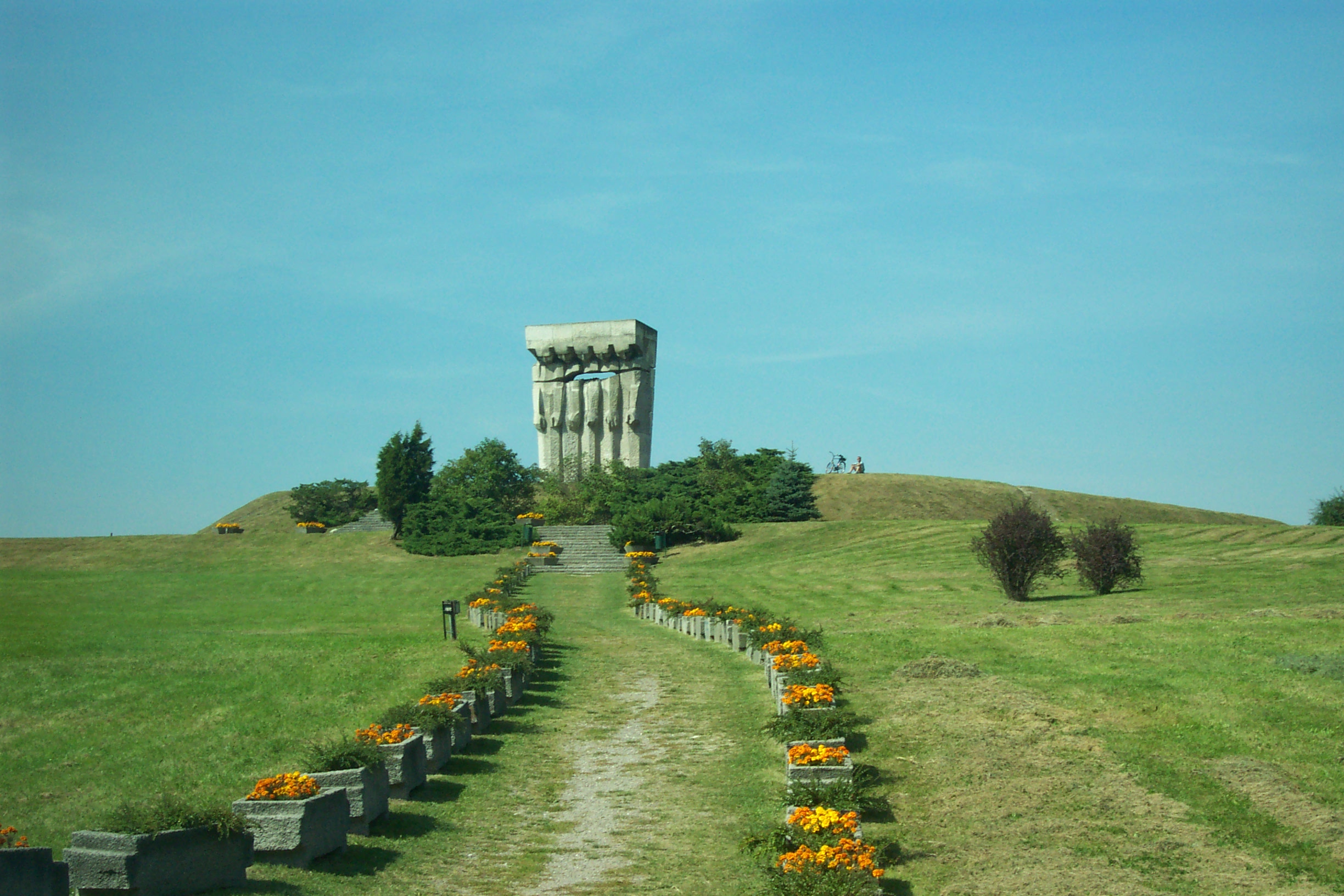
The Plaszow memorial as it appeared in 2000 (ed_and_don/Flickr, under CC BY-SA 2.0)
A few decades later, after the end of communism, two smaller monuments were erected close by: an obelisk unveiled in the year 2000 in homage to the Hungarian Jewish women who passed through the camp on the way to the gas chambers of Auschwitz-Birkenau; and a memorial to the murdered Jews funded by the Jewish community in Kraków. Places of executions are also commemorated.
Not until 2003 did information signs appear next to the routes leading to the former camp, put up by the Centre for Cultural and Ecological Education in Kraków. But the area remains open, without fences or appropriate signage.
The March of Remembrance, held annually since late 1980s on the anniversary of the liquidation of the Kraków ghetto, gathers increasing numbers of people marching from Plac Bohaterów Getta (Ghetto Heroes’ Square) to the site of the Plaszow camp, to pay homage at the monument to the murdered Jews and pray for the victims of the Holocaust.
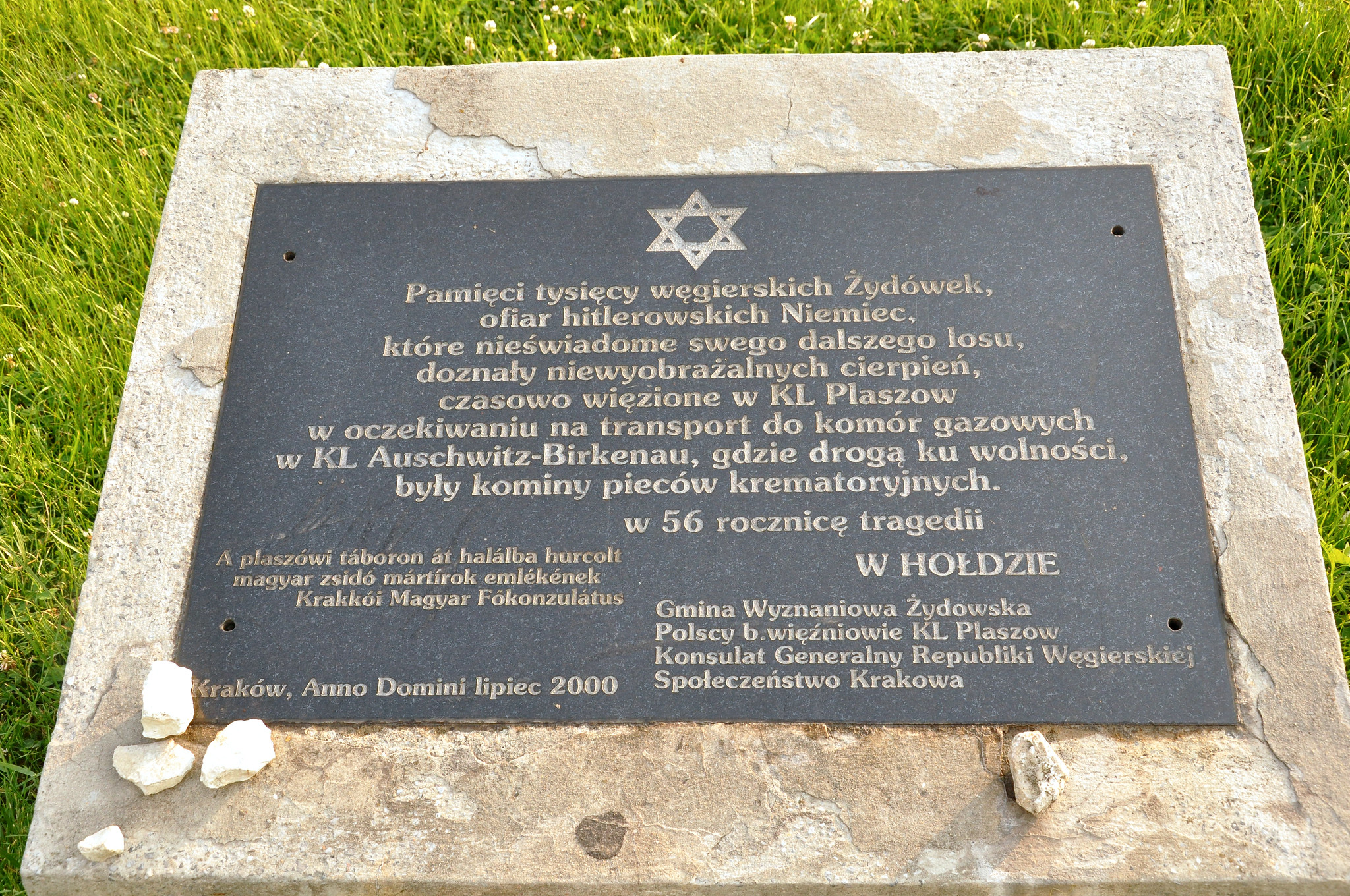
Memorial to Hungarian Jewish women, erected in 2000 (Jennifer Boyer/Flickr, under CC BY 2.0)
As well as remembering the dramatic history of this place, the event also again posed questions regarding the lack of suitable safeguards and provision for the future of the site.
What should be done?
These tensions have increased in recent years as historical interest in the area of the former Plaszow camp has grown but at the same time the surrounding district has been transformed, with the development of housing, commercial and transport infrastructure. The site has also become the only major green space in the area, and is therefore used for recreational purposes.
At the beginning of this century, the city of Kraków undertook various measures to commemorate the history and site of the former camp. In 2002, after a long campaign, the area of the former KL Plaszow was included as a cultural good in the heritage register. The next stage of efforts to develop and commemorate the site of the former camp involved debates and discussions resulting in announcement in 2006 of an urban planning and architectural competition to design a spatial development concept for the former KL Plaszow.
First prize went to the Proxima Project Group, a decision that met with protests among representatives of the Jewish community, as well as architects, who saw it as an excessively aggressive interference in the space of the former camp.
The project was accused of breaking rules for Jewish cemeteries and using impractical infrastructure that was hard to maintain in an open space. After being reworked and adjusted, the conception became the basis of a clean-up operation and establishment of the institution that was to oversee the site as well as being responsible for museum and education operations.
However, new interest groups and new arguments appeared. Residents began to oppose the plans to cordon off the area, concerned about losing or having restrictions imposed on access to a green space popular as a place for walks and recreation. Local environmental groups warned of the planned felling of some trees on the fringes of the area in places earmarked for museum buildings.

The former home of Plaszow’s camp commandant, now a private residence renovated in 2017-18 (Esther1956/Wikimedia Commons and Jacekdz74/Wikimedia Commons, both under CC BY-SA 4.0)
The project to commemorate KL Plaszow envisages leaving the terrain of the former camp in as unchanged and authentic a state as possible, adding information signs and marking important places. Next to it, however, the so-called Memorial, a new museum building with a permanent exhibition is planned, along with parking spaces for coaches.
Collaboration and consultations
In 2017, the City of Kraków, the Jewish Religious Community in Kraków and the Museum of Kraków signed an agreement signalling their intent to work together to commemorate KL Plaszow.
The following year, the city council passed a resolution on moves towards establishing the Museum – Place of Remembrance KL Plaszow.
The most tempestuous part of the preparations proved to be the public consultations, which took place until early 2020 and concentrated not only on the plans for the new museum, but above all on residents’ expectations, concerns and comments on the concept for development of the area.
Residents of the affected districts are concerned about the felling of trees to make way for the planned infrastructure and about maintaining free access to the area. Many are also worried about an influx of tourists who could disrupt life and transport in the area. The sometimes dramatic contributions to the discussion have called this a threat to residents’ health and lives.
The vision of the directors of the Museum of Kraków, who estimated that the museum could attract as many as 500,000 visitors annually, has alarmed residents, who cite the example of the Auschwitz-Birkenau Memorial and Museum, visited by 2 million tourists in 2019.
“We are in favour of commemoration too. But not counted only in profit from tourists. The city’s actions are leading to touristification, commercialisation and closing of the area,” said one local resident and pressure group member, quoted by Gazeta Wyborcza.
The Museum of Kraków, which has developed the plans for the new Museum – Place of Remembrance, says that it will “provide a worthy and appropriate place to fully remember the victims of KL Płaszów”. It sees the project as a vital part of its work to educate about and commemorate the Second World War.
“The museum will allow the memory of the tragic past to become a warning and lesson for future generations for such a dramatic fate to never again be allowed to befall humanity,” says the museum.
Yet public consultations are still continuing, as residents continue to resist the plan. In the meantime, the site of the former camp – an area of former Jewish cemeteries and where the remains of thousands more victims of the Holocaust lie – continues to be desacralised by residents of the city – even if few negative actions are the result of bad will.
Whatever the plans are of the city authorities and the museum, unless they are able to work together with locals, it will be impossible to commemorate Plaszow’s history with the care and respect the site deserves.
Translated by Ben Koschalka
Main image credit: Jakub Włodek / Agencja Gazeta
